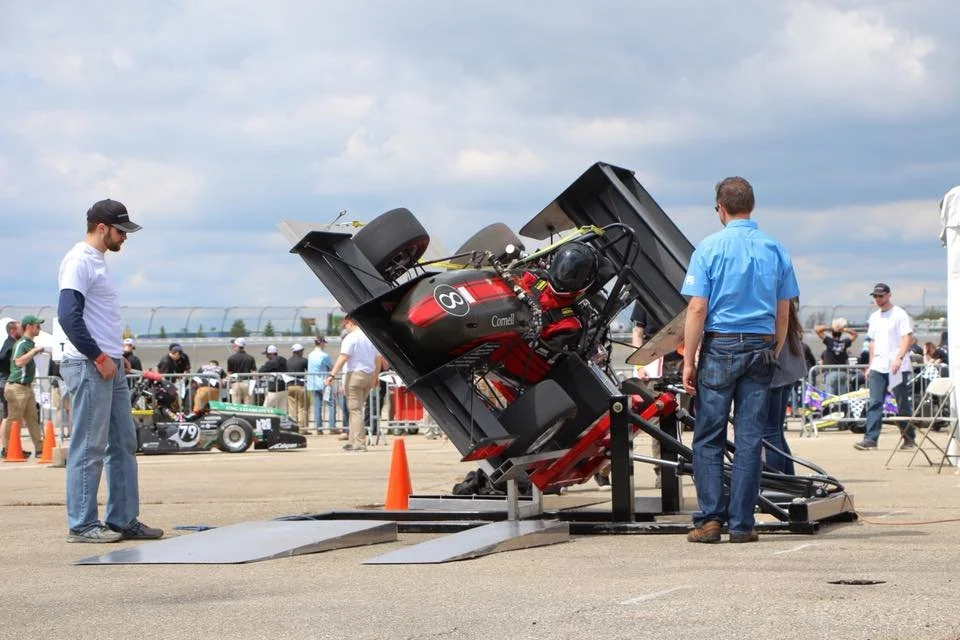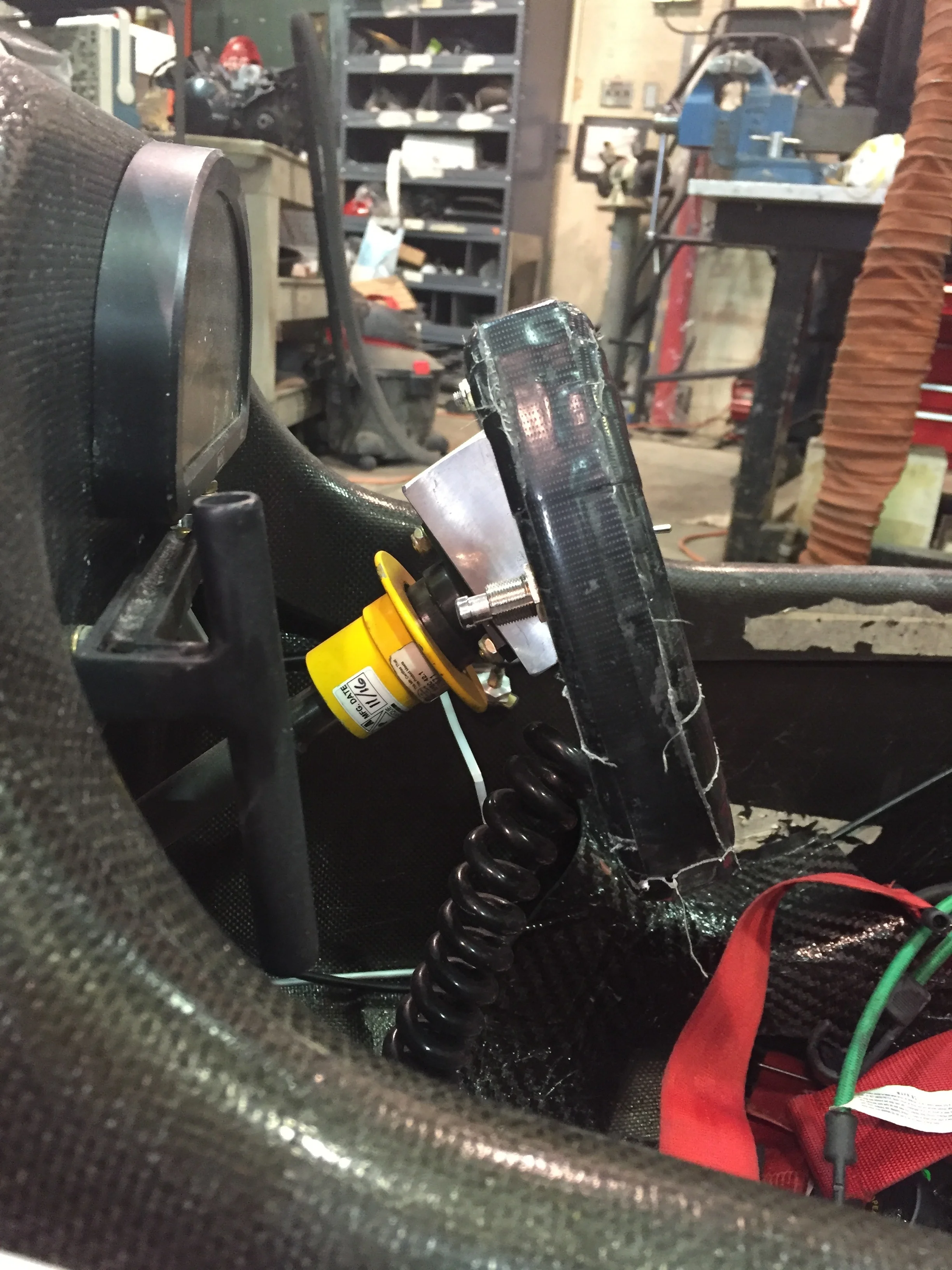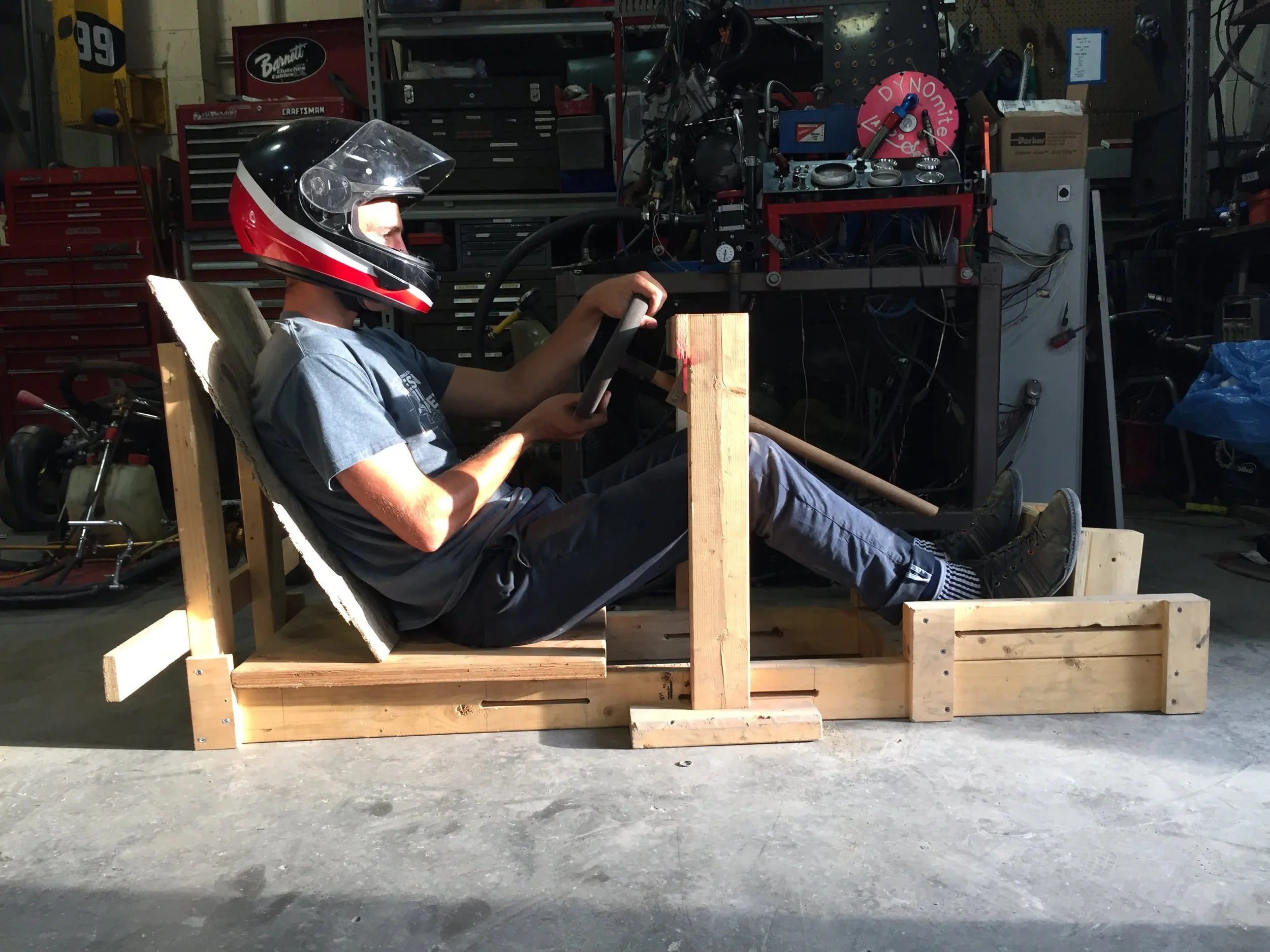Ergonomic System & Seat design
Role: Designer, clutch lever system
Timeline: 2016-17
In February of 2017, I found an opportunity to conduct ergonomic assessments and heuristics to improve the ergonomic system for competition in May.
My team placed 8th overall (1st place in ergonomics) at Michigan International Speedway in 2017.
Role: Ergonomics Subteam lead
Timeline: 2017-18
For ARG18 (2018 car) I'm redesigned the seat, firewall, and driver placement. My goal was to have optimal evidence-based design which will measured by driver performance and comfort.
I presented the ergonomic system at competition, we placed 11th overall (1st place in ergonomics).
Role: Ergonomics outgoing subteam lead
Timeline: 2018
Goal: time to go electric!
How it all started…
Design Process
1. Clutch Lever Sketch
Ergonomic Ask: Redesign the Clutch lever
Can angling the clutch lever handle to where it is aligned with the steering wheel improve comfort and productivity of the driver?
2. Clutch Lever CAD model
I used Autodesk Inventor Professional to sketch and CAD model the Clutch Lever system
3. Usability Test via GoPro (w/o angled handle)
I conducted a usability test that coded duration of operating the steering wheel, multiple levers and buttons.
4. Manufacturing
Insight
After several Discomfort Questionnaires were conducted, the angle of the handle reduced discomfort in fingers and wrists.
Ergonomic Assessments
I adapted Cornell's Musculoskeletal Discomfort Questionnaire to cater to our driver's biomechanics and anatomy when driving. The below image displays the level of discomfort reported in 4 driver's before and after iterations had been conducted within the ergonomic system of the car (formative testing was used to cater toward personal drivers).
Discomfort Survey before and after comfort iterations
Ergonomic Mockup
Defines driver dimensions and driving preference by using flexible components: steering, seat, and pedals. Holding the back, dash, and floor constant.











